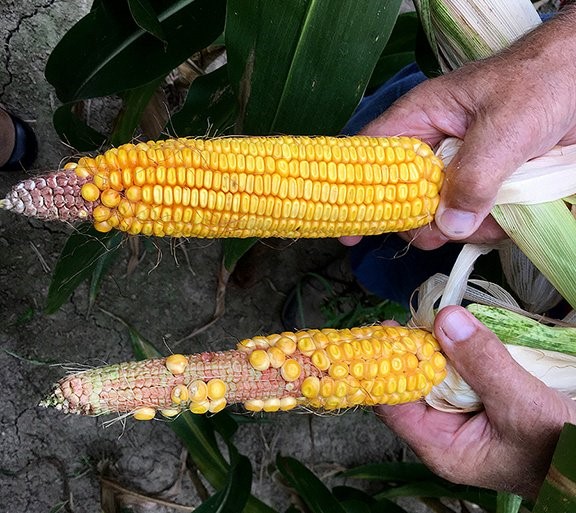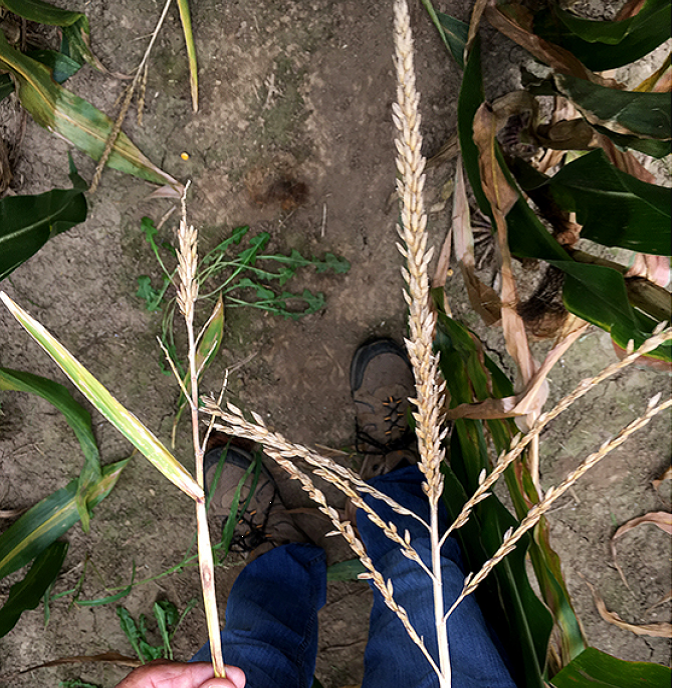Adding Boron with Fungicide Applications on Corn
July 19, 2018
Greater than 50% of tissue tests on corn in the Midwest come back low in boron. This is not surprising given the abundant amount of rain fall this year. Low boron levels and availability impedes the crop’s ability to transport boron weakening the structure of pectin, which is a fiber that the plant needs to remain physically stable. When this happens the growing points in the plant that contain meristems abort, leading to a negative impact on tassel, silk and kernel development.
In high yield situations, boron fertilization becomes critically important. In severe boron deficiencies pollination issues arise from poor and delayed tassel development and reduced pollen viability. Although a more common scenario is where insufficient boron availability between R2 (blister stage) to R4 (dough stage) affects kernel development as it is important in the migration and metabolism of carbohydrates, facilitating the transport of sugars through membranes.
If you have low boron levels adding boron to your fungicide applications is beneficial. We’ve seen the best results 1 to 2 pts/acre of BRANDT Smart B-Mo applied with fungicide.
View our 2018 Research Farm data HERE >

Severe boron deficiency resulting in poor kernel development (Credit: BRANDT)

Severe boron deficiency can cause delayed and poor development of tassels (Credit: BRANDT)
